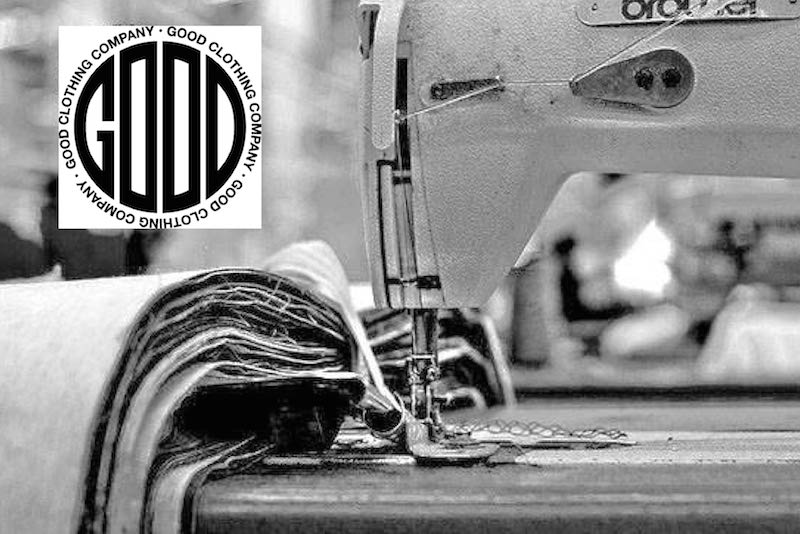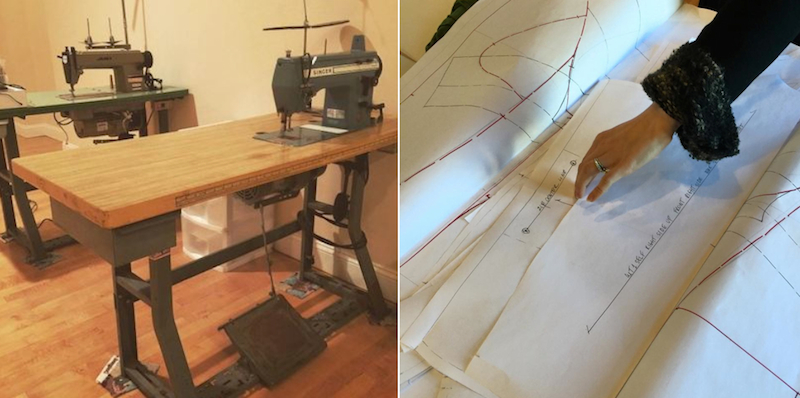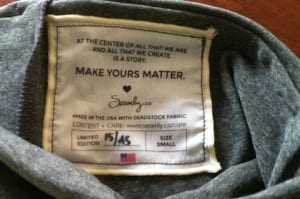Kathryn Hilderbrand has an infectious enthusiasm. Follow her on Facebook and you’ll see what I mean. She is three parts designer, tailor and entrepreneur, simultaneously selling her own clothing line, GreenLinebyK, and running a tailor shop on Cape Cod called Stitched. This year, she’s going for the trifecta and launching an apparel manufacturing facility in Mashpee, MA.
Kathryn emailed me shortly after she found out about a certified “green” facility that had become available for rent. It was the perfect space to open a sew shop for small batch apparel production. She would have to go through a lot of red tape and get approval from the city, but she was ready to take it on.
Just a couple of months after that first conversation, Kathryn has a two-year lease on the building and is starting production for her first client, a country music singer. I interviewed Kathryn about the nuts and bolts of Good Clothing Company and how it can help small designers.
Tell us about your latest venture, Good Clothing Company.
Good Clothing Company is a sustainable and ethical apparel production facility on Cape Cod. Our focus is small runs and quality craftsmanship.
What inspired you to open your own production facility?
I had reached a point where I needed to go into production for my own label, GreenLinebyK, but I couldn’t find any apparel production facilities offering minimums that were in line with my principles and worked with my budget. A US based facility was very important to me because I believe in supporting our local economy, and I wanted to be able to be hands-on when needed.
Why is a venture like this important to the fashion industry at large?
By making apparel production available on a local level, we create jobs for displaced sewing industry workers and give many emerging fashion designers the opportunity to grow their businesses.
What type of products / designers are a good fit for Good Clothing Company?
We can deliver on most apparel and soft home goods products. Although we can aid designers with pattern making and sourcing, it’s best for a designer to be well prepared with each piece of the puzzle they need to go into production. A designer with a solid plan, sourced textiles and a commitment to sustainable production is our ideal client.
Why is this venture personally important?
As an industry professional for 30 years, I have seen and weathered the storm that fast fashion so furiously wrought upon the apparel industry in the US. I am committed to engaging in positive change, bringing back industry jobs and producing quality products in a way that is true to my set of principles: ethical and sustainable goods made by well paid people.
—
If you’re a designer or consumer who believes in similar ideals about fair employment opportunities, ethical manufacturing and sustainable business practices, Kathryn is launching an Indiegogo campaign to buy additional machines for Good Clothing Company. Additional machines means more employed sewers and that means added capacity to work with more designers.
To support and share Kathryn’s campaign, check it out here.
UPDATE: Kathryn’s Indiegogo campaign was successfully funded!








